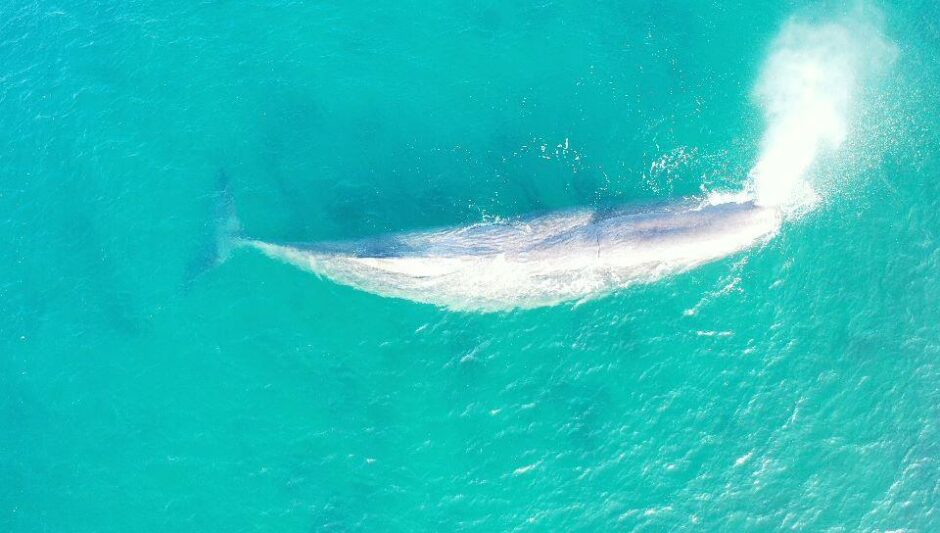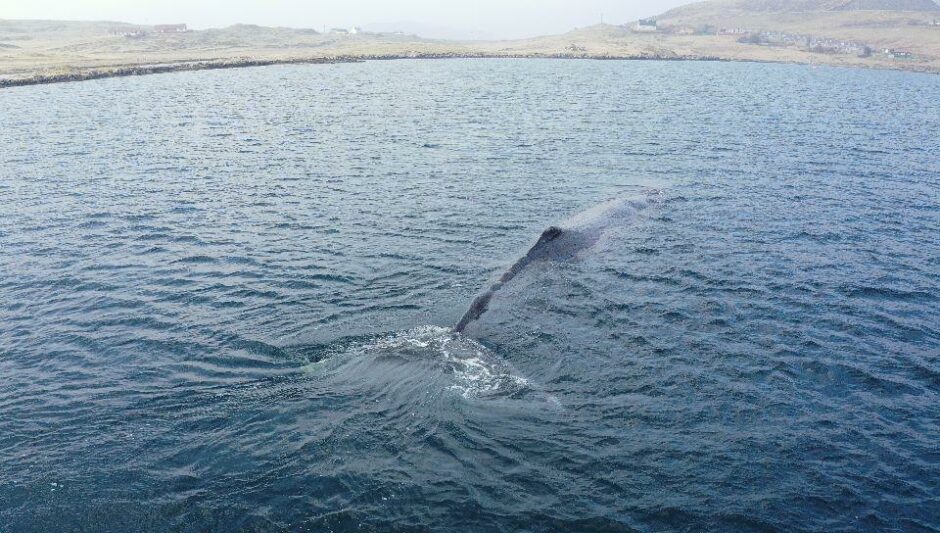A sperm whale in Shetland has finally been moved to deeper waters after an arduous six-hour rescue through hail and snow.
The sperm whale had been concerningly close to the shoreline in Whiteness Voe for 10 days, but boats managed to coax the whale into deeper waters on Wednesday afternoon.
Nine vessels were involved in the complex operation of guiding the whale out of the voe into deeper waters to the west of the coast.
Two boats first approached the whale on Tuesday evening to see how the 45ft male whale would respond. After the mammal showed no distress, a plan was put in place for more to come and try to guide the whale offshore on Wednesday morning.
It was last seen diving deep into the sea near the island of Hildasay round 2pm.
Once in a lifetime experience
Hatchery technician Gary Buchan has been following the whale from day one, and has been monitoring its behaviour with a drone.
The 52-year-old said: “I’ve never seen nothing like this before, I was amazed to see a sperm whale this close in. And I thought it was a fantastic opportunity for photos and videos.
“But it soon turned out that I was doing it for the health of the animal, because drone footage is good for monitoring the animal from above and monitoring the depth of water it was in.
“I think the way things have been going they were expecting it to die within a short period of being here. But as it’s gone on, it’s got stronger and stronger every day and it’s been swimming around quite a lot.”
Mr Buchan said there has been a lot of people involved in keeping an eye on the whale, with some spending 15-16 hours a day monitoring the situation.
Those living nearby have also been coming to view the mammal.
“Every day you’re seeing probably upwards of 40-50 people if not more to view this animal,” Mr Buchan said. “As far as I see it, it’s a once in a lifetime thing – you never see a sperm whale this close in.”
Helping to give him his best chance
Karen Hall, marine mammal advisor for NatureScot, said that when the whale first appeared on Monday, March 21, she did not think it would survive.
However, as the week went on it appeared to be acting normally and was sticking to the deeper channels in the voe. It was decided that an attempt at helping the whale exit should take place.
Ms Hall said: “The longer it stayed in that enclosed area, the weaker it was going to become. None of us felt right basically watching it becoming weaker and weaker and die.
“We had a plan in place and the skippers were always in charge and if they thought there was an issue they would back off.
“The whale was continually monitored by drone. We were making sure to keep the stress levels to the absolute minimum. We were fortunate in this case that the whale was really quite calm.”
Several locals helped using their boats as did Scottish Sea Farm. They made sure to approach the whale at high tide using local knowledge to “give it the best shot”.
After six hours guiding the whale in hail and snow, the rescue appeared to be a success with the whale disappearing into deeper waters.
Ms Hall added: “It was all done in a very calm and controlled manner. I’m absolutely delighted that it was last seen diving out to the west and we can only hope that it stays out to the west.
“At the end of the day we’ve given him his best chance.”

